 Back to selection
Back to selection
Cine Gear Expo 2024: 17 Cameras, LED (and Traditional) Lights, Lenses and Remote Camera Controls We Loved

Every start of summer, the Cine Gear Expo comes to Los Angeles. Initially held on the Paramount lot, the Expo had a short stint at the LA Convention Center for two pandemic years before landing this yearat the Warner Brothers lot in Burbank. The movie lot aspect assists greatly with vibes: While its chief competitor, NAB Show—held a few months earlier in the Las Vegas Convention Center—feels like a traditional trade show, at Cine Gear you can peruse the latest lenses as the iconic Animaniacs water tower looms in the distance, just visible behind a camera crane which swings around high above you in demonstration. With the chatter so gear-centric, it’s nice to have visual reminders of what these products are ultimately crafted in service of.
Many brand new products were unveiled, including new high-resolution cameras from industry stalwarts Panasonic, Canon, and Blackmagic—none of which will break a budget. Budget-friendly products seemed a point of emphasis, along with lenses seeking to be the one in your collection you carry from film sets to live broadcasts. Dual-purpose products also mean less money spent—the old two-for one. Technological advancement is leading to less compromise. There is always some compromise: lighting houses must choose just how waterproof a light should be while also remaining a manageable size and weight, for instance. But that type of assumed tradeoff is swiftly becoming a notion of the past. With more functionality built into the core products themselves, Cine Gear Expo 2024 seems to envision a dongle-less future–a vision everyone can get behind.
After a weekend spent scouring the crowded WB lot, here’s my report on the four new cameras, five lights, four lenses, two remote camera control units and two software upgrades I believe are worth your attention.
Cameras
Panasonic LUMIX GH7
shop.panasonic.com/products/gh7-mirrorless-camera-body
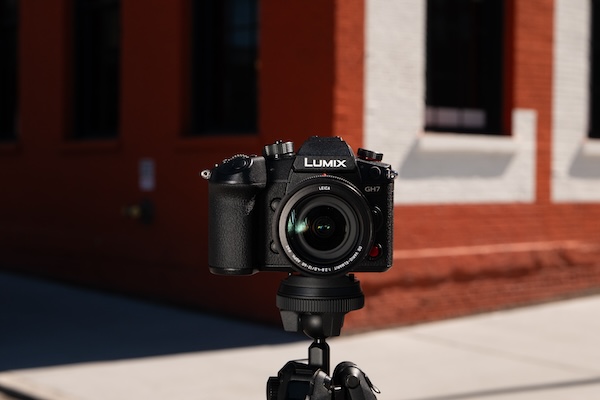
Panasonic LUMIX’s brand-new GH7 comes with a stellar price point of just $2,199 and 5.7K shooting capabilities, making it the ideal “wreck cam” to put in dangerous positions. In the past, explosion cams were often hyper-digital GoPros and the difference in image quality was distinct, but now you can hardly tell when a sequence quickly switches between a beefier high-resolution A-camera and the GH7. (Panasonic shot the short film The Cookie Jar to illustrate this point.) The GH7 can record ProRes RAW files internally and 40 LUTs can be uploaded into it, which Panasonic LUMIX’s Neil Matsumoto says makes it “almost like a mini DIT station.” Its flexibility and size means it can double as a director’s viewfinder on set or for location scouting. Face-detect autofocus was a point of emphasis in development, and features Panasonic has always excelled in, like image stabilization and resistance to overheating, are still present.
Another big Cine Gear announcement from Panasonic LUMIX was a licensing deal with ARRI so that cinematographers can now utilize industry standard Arri LogC3 (or ARRI Look Library) while shooting Panasonic, further making it a perfect camera to hold its weight next to much more expensive rigs. This ARRI license is a one-time $200 fee, which also works with the older GH6 if you’re not ready to upgrade just yet.
Price: $2,199
Release date: July
Canon EOS C400
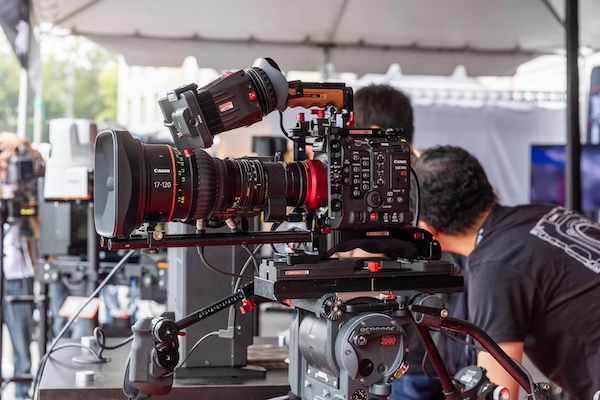
With its plethora of built in ports that make attaching an external expansion pack obsolete, Canon looks to merge the cinema and live broadcast worlds with their new C400 6K camera. The lens port has been moved to the front, which gets rid of the need for a longer port to the back. Cable inputs have shifted from the propriety canon version to USB-C, opening the door for third party accessories. Like other products at the expo this year, the C400’s specs prove that going smaller and lighter doesn’t necessarily mean sacrificing functionality. It’s about five inches in each direction and weighs only 3.5lbs. The triple base ISO means low-light capabilities are much improved, as is the autofocus functionality. A cool feature is the Clear Scan system, in which the camera searches and auto-tunes in correct LED frequencies, preventing on-screen flickering and saving programmers a manual step.
Price: $7,999
Release date: September
Blackmagic PYXIS and URSA Cine
blackmagicdesign.com/products/blackmagicpyxis
blackmagicdesign.com/products/blackmagicursacine
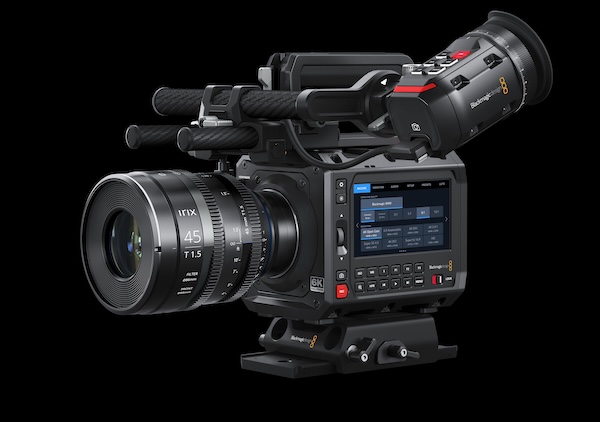
Blackmagic showcased two new cameras at Cine Gear, which will both hit the market this summer. The PYXIS 6K fulfills a consumer desire for Blackmagic to develop a full-frame box camera. A box-shaped prosumer 6K camera—instead of a flat mirrorless body—means much more rigging options, either third party or in house. The body has a lot of socket options and customizable plates for this purpose, which can also be used to house an external SSD drive or cell phone. Two CFExpress ports (the fastest recording option out there) with hot swapping capability allow for continuous takes. The PYXIS uses the same 6K sensor as Blackmagic’s Cinema Camera 6K which came out late last year.
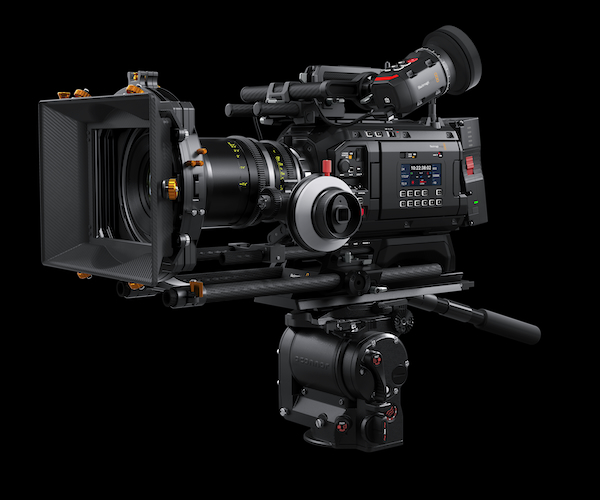
Blackmagic’s ultra high-resolution camera gets a new model in the URSA Cine 12K. This full-frame camera has a nice large screen on its right side with full menu functionality that a focus puller can easily reference. The left side has the traditional flip out screen that can fully rotate. There is a dual SDI out, so if you want both your LUTs and lens info going out simultaneously there’s no need to choose between the two. For transferring large files via a network, the Ursa Cine has built-in Wi-Fi capability with two bunny ears up top and an upgraded 10gb speed ethernet port. There’s also a very handy 10TB SSD drive built right in. One can leave the drive in and use the wired or wireless network transfer, or remove and attach it to a Blackmagic media dock. As Pedro the Lion sings: “It’s good to have options.” As with the PYXIS, there’s a “timecode in.” Blackmagic is even upping their shipping game: gone are the cardboard boxes and foam; in are nice custom foamed Pelican 1510 cases with plenty of accessories, including two different mount options for lenses. Both the PYXIS and URSA Cine come with Blackmagic’s DaVinci Resolve Studio.
That’s not all from Blackmagic. With Blackmagic Cloud Sync you will soon be able to import Blackmagic footage directly into DaVinci Resolve as it’s being captured, so editors can begin cutting together footage—whether an assembly or dailies—in real time. This software is currently in beta and will be available via the Blackmagic Cloud $5/month subscription fee–which you only pay for when you’re using.
PYXIS 6K: $2,995
URSA Cine 12K: $14,995-$16,495
Release date: summer
Lighting
Aputure Infinimat
aputure.com/products/infinimat
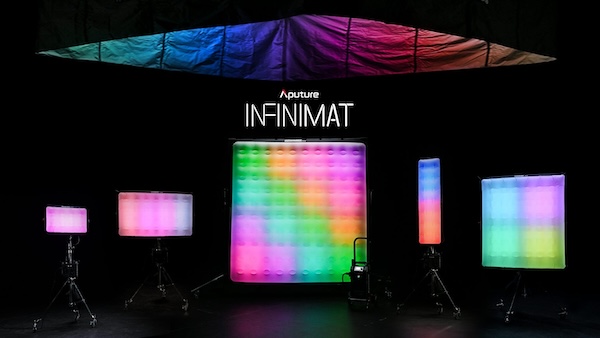
In 10 short years, Aputure has gone from what many dismissed as a “YouTube creator lighting company,” as co-founder Ted Sim says, to an award-winning company, with their LED equipment appearing on major blockbuster sets like Dune. This summer, with the release of the Infinimat, Aputure will have every type of LED light in their repertoire. This is helpful considering all Aputure devices automatically connect wirelessly to one another on set after they’re turned on and can be controlled easily via their app.
When collecting feedback on large LED mat lighting, gaffers complained about how much work others were to put together, and how flimsy they felt once constructed. Aputure innovated by having a giant airbag with the attached diffusion inflate around the LED panels, which then attaches easily to a stand. The smaller 1×2 Infinimat can be placed directly onto the wall with a strong adhesive. Because each individual light is sealed to prevent water damage in order to score a coveted IP65 near-waterproof rating (completely necessary considering the scale of the 20×20 version), there was a concern about overheating. To solve this, Aputure installed a small metal plate on the back of each light as a radiator to diffuse heat. This added a sturdiness to the whole fixture. This is not your early generation flimsy LED mat light.
What’s next now that all of the possible LED lights in the Aputure family are developed? Sim believes they can go the traditional route with design reinforcement on updated units. On that end, Aputure’s newly released Lightstorm 600C Pro II also impressed at Cine Gear. But Sim stresses a company-wide focus on UI/UX with their app to make LED lighting so seamless and intuitive that you have that extra space to play around and be creative on set: “The joke is that filmmaking is two percent creative and 98 percent moving things and hustling. It should be more than two percent creative. You should be able to sit there and dream and say ‘Imagine if this backlight was blue’ or “What if we put a slash of red light in here?’”
Prices vary based on size
Release date: late summer
True Gamut HMI to Tungsten Lamp
en.truegamut.com/product/33.html
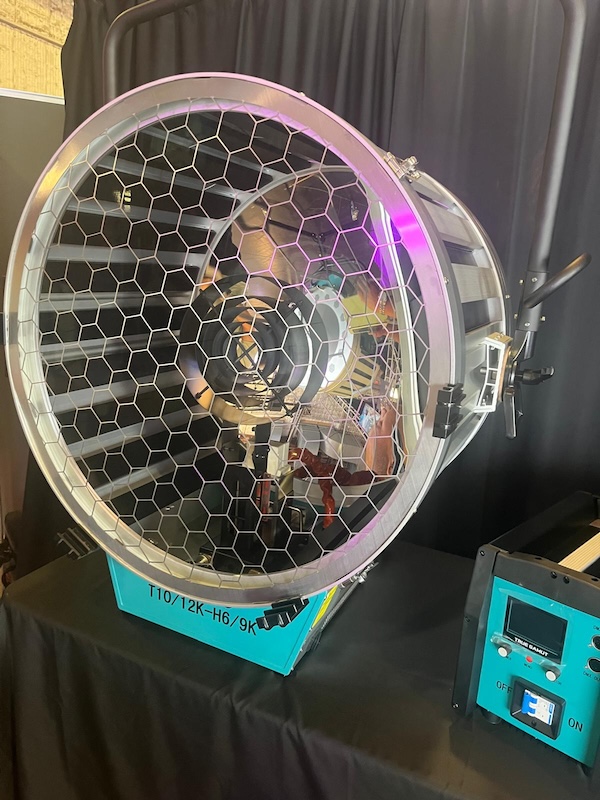
Advances in LEDs garner attention for good reason: they have the most space for advancement based on how relatively new the technology is. That’s why I made a point to scope out some old-school traditional lighting at this year’s Expo and discovered this nifty lamp from Chinese company True Gamut. Billed as the first ever HMI-to-tungsten light, it came out in 2021 and was used on large Chinese productions like The Wandering Earth II. I tested out its internal metal toggle between HMI and Tungsten and found it to be simple, sturdy maneuver. The straightforward lamp light looks to save film sets money, space and time, since these traditional lights are big and don’t set themselves up. COVID-19 prevented True Gamut from entering the U.S. until recently, and their reps at Cine Gear were open about needing to break into the “very important market” of Hollywood via rental houses and individual gaffers. We’ll keep an eye on if these dual-use traditional lamps catch on here.
Wolfram Lights
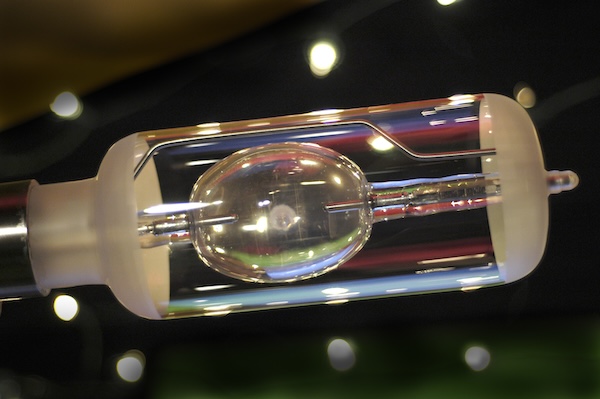
Staying with traditional lighting (don’t worry, more LEDs are below), Wolfram is a boutique Modesto, California-based company which makes high quality HMI bulbs by hand, ranging from 1,800 watts to 18,000 watts. Wolfram does all of the quartz blowing and hand-welding in house and each is serialized by hand. One Wolfram 18K HMI bulb is like “having the sun” and it would take a “truck full of LED lights and all of the equipment to hook them up” to match, Wolfram’s Amanda Ortiz says. If you happen to drop one of these bulbs and crack it, rather than have to buy a new one, Wolfram repairs them by hand.
Prices vary
Available now
Astera LunaBulb
astera-led.com/products/lunabulb
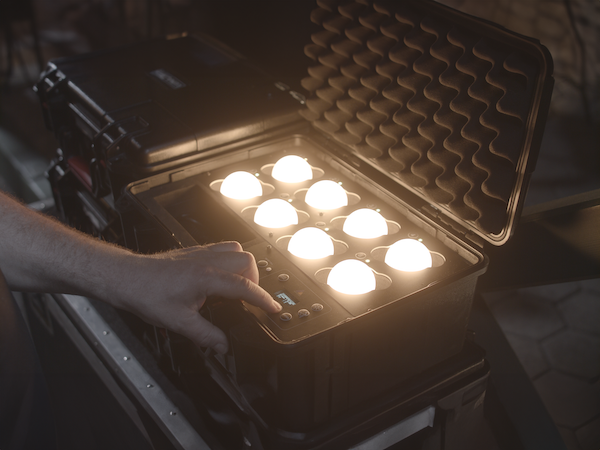
At last year’s Cine Gear, a gaffer was describing to Astera CTO Simon Canins the product he wished Astera would create next. Canins told him to hold a minute and then rushed to his car, returning with a rough prototype for the exact product the gaffer had been describing. Feedback during product development is paramount, and this gaffer’s request for an Astera NIX-style bulb that could double as an on-camera practical light had been in the works already precisely because Astera listens to its customer base.
A year later and the new LunaBulbs have moved from Canins’ trunk to the expo floor, available in a set of eight for only $1,200. Despite their small size, these IP44-rated bulbs have built-in wireless CRMX, DMX, Bluetooth and WiFi. They can be controlled via traditional console controls for larger sets, or through the Astera app on a smaller production with ease. The lighting range on a bulb goes from 1,750 watts to 20,000 so it can easily mimic those old-school warm tungsten colors or get dialed up for a bright-as-the-sun look. The CRI (color rendering index) approaches 97 plus, so the color quality is consistent across a wide RGB range. Astera’s LunaBulb seem positioned to join the company’s gaffer-favorite Titan Tubes as a no-brainer inclusion on film sets of any size.
$1,200
Shipping in a few weeks
Lenses
Sigma 28-45mm
sigmaphoto.com/28-45mm-f1-8-dg-dn-a
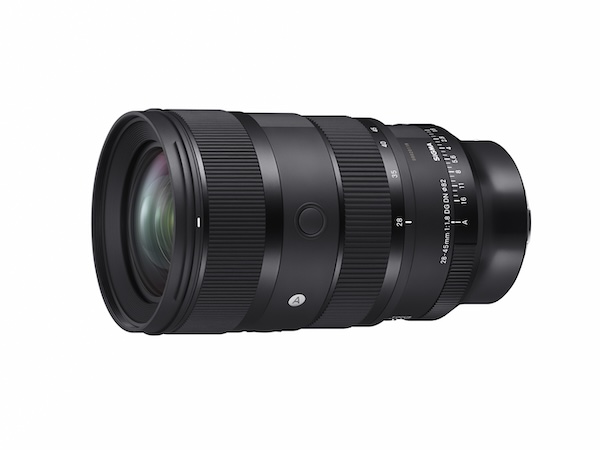
The 18-35mm lens in Sigma’s Art series was one of the Japanese lens company’s most popular products, and the newly unveiled 28-45mm zoom lens essentially acts as its full-frame equivalent. Every lens company provides a distinct look for DPs to consider and Sigma prefers to provide a neutral starting place, a clean look free of aberrations that cinematographers can adjust with filters or later in color grading. While this lens has a limited zoom range, it almost acts as a prime lens, with three or four prime stops to choose from. You get the best of both worlds: “the flexibility of zoom and speed and optical performance of a combination of primes,” says Sigma tech specialist Aaron Norbeg. “It’s currently the only full frame zoom lens that gives you a fast constant aperture of 1.8.” This means it maintains both a consistent exposure and depth of field as it zooms in either direction. Built for still photography and film use, the 28-45mm Art lens is a weather sealed, flexible and high-speed lens for mirrorless cameras. Making lenses for mirrorless cameras has been a recent point of emphasis for Sigma, and this 28-45mm lens is available for Sony E-mount and Leica L-Mount.
$1,349
Release date: June 20
Angénieux Type EZ 3 Telephoto Zoom
bandpro.com/angenieux-ez3-cinema-telephoto-zoom-lens.html
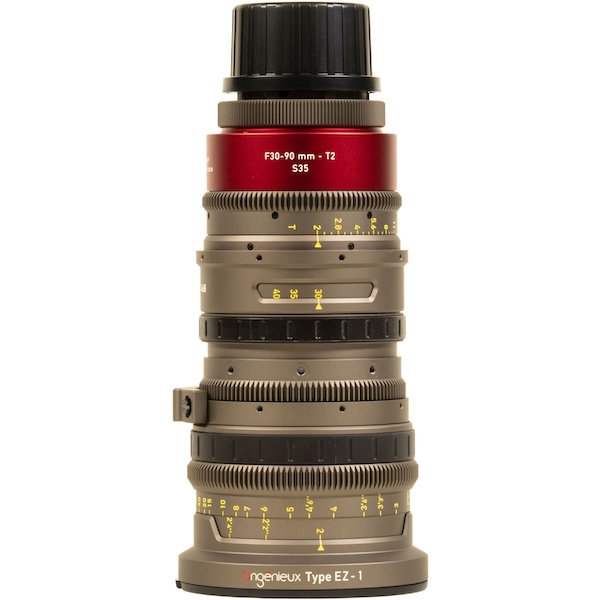
French brand Angénieux brought the third lens in their EZ series to Cine Gear: a telephoto zoom lens. The range at Super 35 is 45-165mm at T2.3-3, and in full frame it goes from 68-250mm at T3.5-4.5. Switching between Super 35 or full frame shooting modes is a cinch. Band Pro handles the U.S. distribution of Angénieux, and Band Pro CTO Randy Wedick describes this as an “owner/operator lens” but says it will be found on film sets of any size, even if it wasn’t necessarily designed for that. Shooting observational documentary filmmaking at a distance is just one obvious application. Through “a very complicated mechanical element,” Wedick says breathing has been eliminated from these Angénieux zoom lenses. (Breathing is when the image size shifts as you zoom from a wide range.)
Angénieux makes cinema lenses. They don’t dabble in still photography or scientific lenses, and as such, their products can follow a single film-driven overriding principle: high resolution matched with low contrast images. This allows for softer facial feature recording, while also capturing high resolution footage from the 8K cameras being employed today. Band Pro promises more lenses to come in this popular EZ series. “We have some cool ideas,” Weddick says, adding there are plenty of Angénieux lenses they can pull from the archive and update for the digital cinematography landscape.
$19,300
Available now
Canon CINE-SERVO 17-120mm
usa.canon.com/shop/p/cine-servo-17-120mm-t2-95-3-9-pl?color=Black&type=New
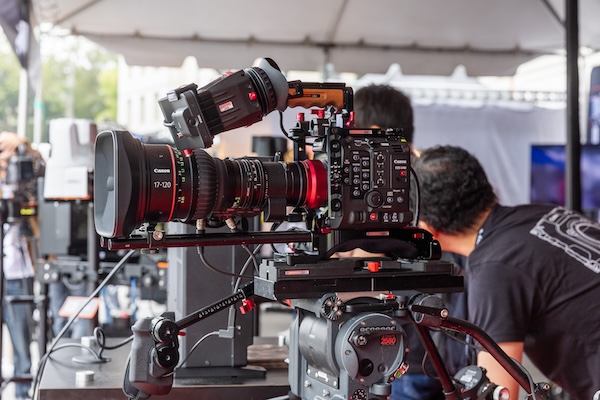
Outside of the C400, Canon also debuted a few new lenses at Cine Gear. With its speed and zoom range, Canon support manager Peter Marr described the CINE-SERVO 17-120mm as a “traditional workhorse” lens. Canon envisions this for use on both shows and live productions. There is a new internal drive unit, which Canon debuted at NAB show earlier this year. USB-C ports are now present for faster firmware updates. Available for either PL or EF mounts, Canon also now manufactures their own PL to RF mount adapter should you require that. Like many of this year’s products, minor tweaks were the focus for this high-end zoom, prioritizing broader accessibility across different shoot types.
$23,850
Available now
Fujifilm 14-100mm Duvo
fujifilm.com/us/en/business/cine-and-broadcast/duvo
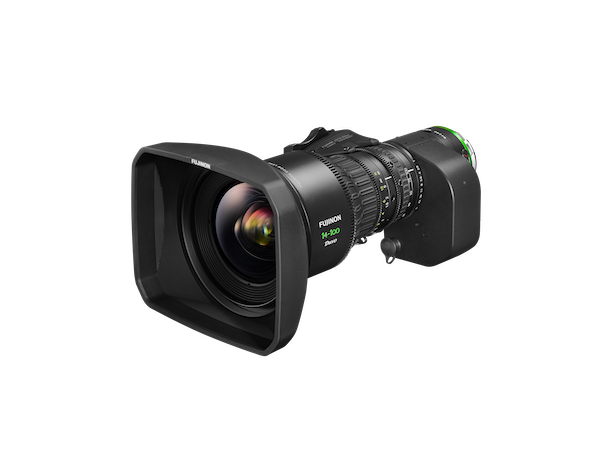
“Wider, lighter, longer” was the feedback from DPs and camera operators to Fujifilm, who responded with the nimble 5.5lb Duvo 14-100mm zoom lens. Echoing the trend we heard throughout the expo, Pamela Bloom from Fujifilm says that with the worlds of cinema and broadcast merging, this new Duvos zoom lens is the perfect lone wide lens on film sets that can also lend a cinematic look to a filmed concert, comedy show or basketball game. Bloom stressed that as technology moves forward there is less compromise with product development. The smaller weight of this Duvo lens needn’t sacrifice the vibrant color space Fuji is known for. We are fast entering a world where there is room for it all.
Pricing TBD
Release date: late summer
Remote Camera Control
Bit Part Bitbox
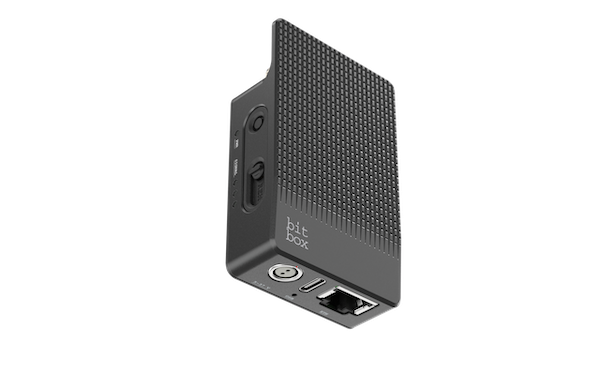
Bit Part was co-founded by three digital imaging technicians (DITs) who spent years begging manufacturers to do something about frequency interference on set. The issue was that within a certain radio frequency range, everyone’s cell phones, iPads, etc. create noise, so much noise in fact, that when remote camera control goes down “you’re going to have a hell of a time troubleshooting,” Bit Part co-founder Fletcher Babb says. They eventually decided to make their own solution which became the Bitbox, a small device which tunes in at 915mhz to keep things nice and tidy, away from the noise. Nice and tidy could be Bit Part’s core design principles with the Bitbox: it’s compact with sleek, clean design and remarkably simple to connect to the camera. All one has to do is set the camera’s IP to match the network. The device plugs directly into a camera with USB-C or Ethernet, no dongle necessary. Bit Part are currently taking reservations for their inaugural product.
$1,199
Release date: mid-summer
ARRI Hi-5 SX
arri.com/en/camera-systems/electronic-control-system/hi-5-sx
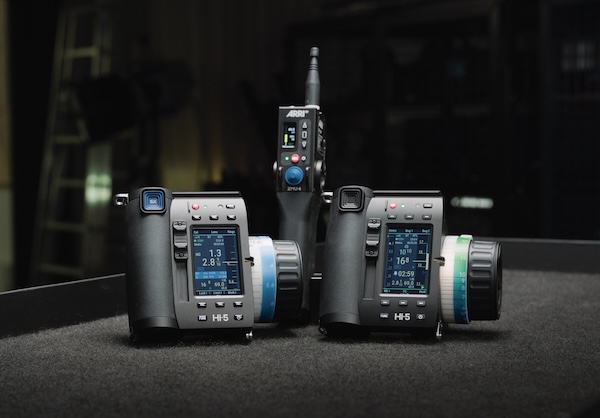
ARRI’s Hi-5 remote camera control from 2022 gets a single-axis version at a lower price. Single-axis means a 1st AC can pull focus, iris or zoom with the SX, but not all simultaneously. But should a Hi-5 SX user find themselves on a larger set, they can upgrade to an All-Axis license and immediately gain greater axis control with this same SX device. Environmentally-friendly design—like upgrading a software license here instead of having someone buy a new product, or Wolfram’s bulb repair policy—always warrants shout-outs. There’s also the option of a Plus License which allows saved lens mapping data as well as the creation of custom smart rings, another ARRI innovation. These physical rings attach to the Hi-5 and let one precisely control many details of how lens pulls and other remote camera controls are handled—its diverse array of applications should have 1st ACs appropriately geeking out. Of course, there are minor adjustments from the original Hi-5 unit including a better knob and increased weather protection.
Price TBD
Release date: September
